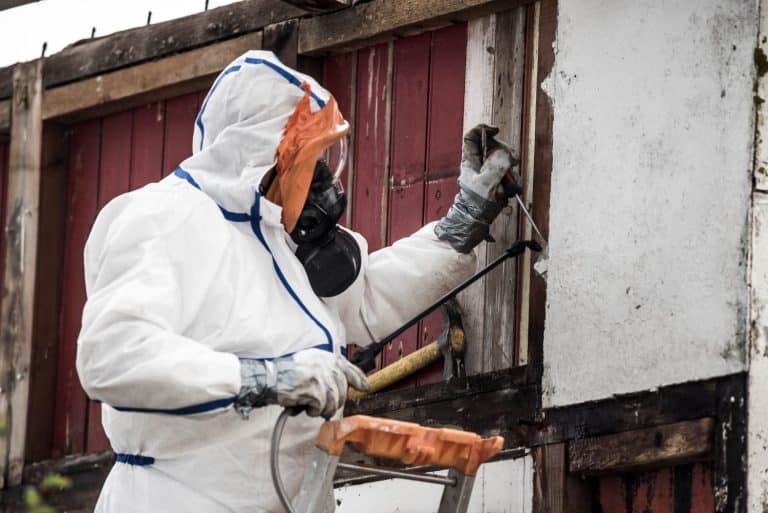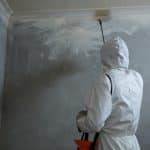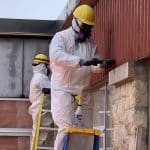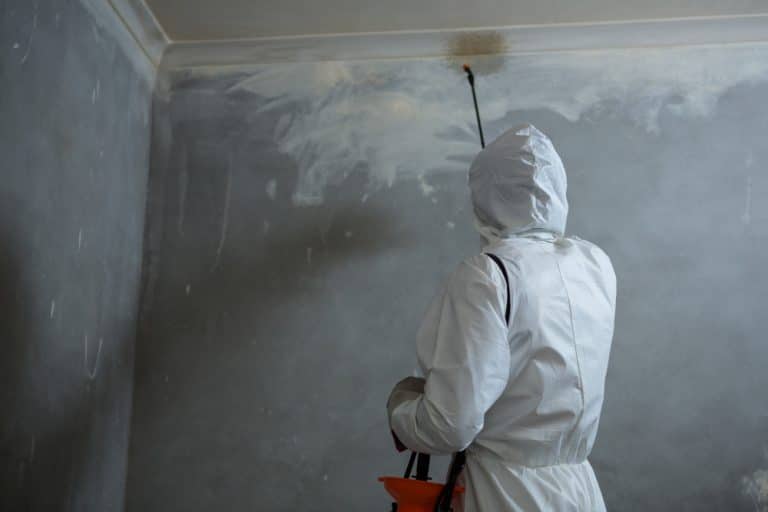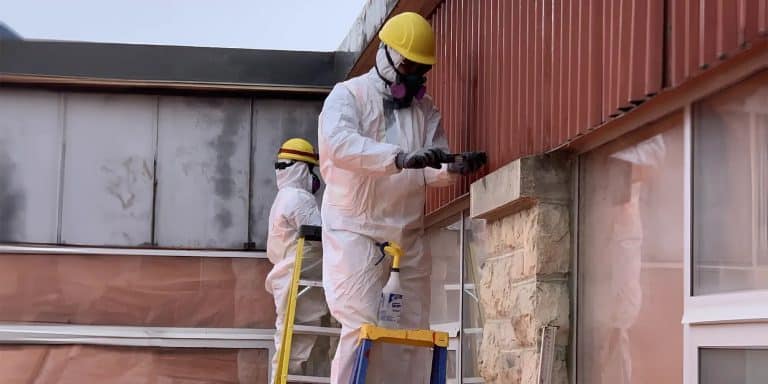Introduction: Asbestos, once widely used in construction for its heat resistance and durability, is now recognized as a significant health hazard. Asbestos services encompass a range of activities aimed at managing and mitigating the risks associated with asbestos-containing materials (ACMs). In this comprehensive guide, we’ll delve into all aspects of asbestos services, covering everything from testing and removal to abatement and remediation. # Asbestos Services in Vancouver.
Section 1: Understanding Asbestos Transition: First, let’s explore what asbestos is and why it poses a threat.
What is Asbestos Services?
Asbestos, a naturally occurring mineral, comprises thin, microscopic fibers that were once extensively used across industries for their remarkable properties. Its robustness, resistance to heat, and excellent insulating capabilities made it a popular choice in construction and manufacturing materials. Asbestos found its way into a myriad of products, including insulation, roofing materials, floor tiles, and cement products. However, despite its widespread use, asbestos is now recognized as a hazardous material due to the severe health risks it poses.
Understanding the Hazards:
The dangers of asbestos lie in its fibrous structure, which can easily break down into tiny particles when disturbed. When these fibers become airborne, they can be inhaled into the lungs, where they may accumulate over time. Prolonged exposure to asbestos fibers has been linked to various health issues, including lung diseases such as asbestosis, lung cancer, and mesothelioma—a rare form of cancer that primarily affects the lining of the lungs and abdomen. Even brief exposure to asbestos can pose significant health risks, emphasizing the importance of proper handling and management of asbestos-containing materials.
Regulations and Safety Measures:
In response to the recognized health hazards associated with asbestos, stringent regulations have been implemented to control its use and ensure the safety of workers and the general public. These regulations govern the handling, removal, and disposal of asbestos-containing materials, with strict protocols in place to minimize exposure risks. Asbestos abatement professionals are trained to safely identify, contain, and remove asbestos from buildings, following established guidelines and procedures to protect both workers and occupants. Additionally, awareness campaigns and educational efforts aim to inform the public about the dangers of asbestos exposure and the importance of seeking professional assistance when dealing with asbestos-containing materials.
Health Risks Associated with Asbestos Exposure
Exposure to asbestos poses severe health risks due to the inhalation of its microscopic fibers. Once airborne, these fibers can penetrate deep into the lungs and other vital organs, leading to various health complications. The primary dangers associated with asbestos exposure include respiratory diseases, lung cancer, and mesothelioma—a rare and aggressive form of cancer.
Respiratory Diseases:
Asbestos exposure can cause respiratory issues such as asbestosis, a chronic lung disease characterized by inflammation and scarring of lung tissue. Asbestosis can lead to symptoms such as shortness of breath, persistent coughing, and chest tightness. Over time, the condition can progress, resulting in decreased lung function and respiratory failure.
Lung Cancer:
One of the most significant risks of asbestos exposure is the development of lung cancer. Inhalation of asbestos fibers can cause cellular damage and mutations, leading to the uncontrolled growth of cancerous cells in the lungs. Individuals with a history of asbestos exposure are at a significantly higher risk of developing lung cancer, especially if they are also smokers. Symptoms of asbestos-related lung cancer may include persistent coughing, chest pain, difficulty breathing, and unexplained weight loss.
Common Uses of Asbestos in Buildings
Construction Insulation:
Asbestos found extensive use as insulation material in buildings due to its remarkable heat resistance properties. It was commonly employed in various forms such as thermal insulation, pipe insulation, and attic insulation. Asbestos insulation played a pivotal role in maintaining stable temperatures within structures, enhancing energy efficiency.
Roofing Materials:
The utilization of asbestos in roofing materials was widespread owing to its resilience and ability to withstand harsh environmental conditions. Asbestos cement sheets and shingles were favored choices for roofing projects due to their durability and fire-resistant properties. These materials offered reliable protection against moisture, UV radiation, and temperature extremes.
Flooring Solutions:
In building construction, asbestos was integrated into flooring materials like vinyl floor tiles, linoleum, and asphalt floor tiles. The addition of asbestos fibers bolstered the strength and longevity of these flooring products, making them suitable for high-traffic areas in residential and commercial buildings. Asbestos-containing flooring provided robust performance and easy maintenance.
Decorative Coatings and Paints:
Textured coatings and paints containing asbestos were commonly applied to interior walls and ceilings for decorative purposes. These coatings not only enhanced the visual appeal of buildings but also provided fire resistance and durable finishes. Asbestos-containing paints served as effective sealants and primers, contributing to their widespread use in construction projects.
Piping and Ductwork Insulation:
Asbestos was extensively used to insulate piping, ductwork, and HVAC systems in buildings. Materials like asbestos insulation wraps, tapes, and blankets were wrapped around pipes and ducts to prevent heat loss and condensation. Asbestos insulation offered effective thermal protection and corrosion resistance in various residential, commercial, and industrial applications.

Section 2: Importance of Asbestos Services Transition:
Now that we understand the risks, let’s discuss why asbestos services are crucial.
Understanding the Risks: Acknowledging the Dangers of Asbestos Exposure
Now that we’ve delved into the risks associated with asbestos exposure, it’s crucial to grasp the severity of these dangers and their potential impact on human health. Asbestos, once hailed for its versatility and fire-resistant properties, has since been unveiled as a silent killer, lurking in countless buildings and structures worldwide. The inhalation of asbestos fibers can lead to severe respiratory diseases, including asbestosis, lung cancer, and mesothelioma, with symptoms often manifesting years or even decades after initial exposure. Moreover, asbestos-related illnesses can be life-threatening, causing immense suffering and placing significant burdens on healthcare systems and affected individuals. Understanding these risks underscores the urgent need for comprehensive asbestos services, encompassing testing, removal, abatement, and remediation measures to safeguard public health and mitigate environmental contamination. By acknowledging the gravity of asbestos exposure risks, we can advocate for proactive measures to prevent further harm and ensure safer living and working environments for current and future generations.
Identifying Potential Threats: Recognizing the Presence of Asbestos in Your Environment
In this section, we’ll explore the various ways in which asbestos can pose a threat to human health and the environment. Despite its ban in many countries, asbestos remains prevalent in older buildings, homes, and infrastructure, posing a hidden danger to unsuspecting individuals. Asbestos-containing materials (ACMs) can deteriorate over time, releasing toxic fibers into the air that can be inhaled or ingested, leading to serious health complications. Additionally, disturbances such as renovation, demolition, or natural disasters can disturb asbestos fibers, further exacerbating the risk of exposure. It’s essential to identify and assess the presence of asbestos in your surroundings to mitigate potential threats and ensure the safety of occupants and workers. Through thorough inspection, testing, and monitoring, asbestos services play a crucial role in identifying and addressing these hidden dangers, protecting public health and the environment from the harmful effects of asbestos exposure.
Managing and Removing Hazards: Safeguarding Against Asbestos Exposure
In this section, we’ll delve into the importance of managing and removing asbestos hazards to minimize the risk of exposure. Asbestos-containing materials (ACMs) pose a significant threat to health when disturbed, releasing microscopic fibers that can be inhaled or ingested. Therefore, it’s crucial to employ proper management strategies to prevent accidental exposure. This includes identifying and labeling ACMs, implementing control measures to limit fiber release, and establishing protocols for handling and disposing of asbestos safely. Additionally, when ACMs are deemed unsafe or deteriorating, removal becomes necessary to eliminate the source of potential harm. Professional asbestos removal services utilize specialized techniques and equipment to safely remove and dispose of ACMs, minimizing the risk of exposure to occupants and workers. By effectively managing and removing asbestos hazards, individuals can create safer environments and protect themselves from the adverse health effects associated with asbestos exposure.
Protecting Vulnerable Populations: Ensuring Safety for At-Risk Individuals
When it comes to asbestos exposure, certain groups are more vulnerable to its harmful effects than others. This section focuses on the importance of safeguarding vulnerable populations from the dangers of asbestos. Vulnerable individuals may include children, the elderly, pregnant women, and those with pre-existing respiratory conditions. Due to their weaker immune systems or heightened susceptibility to respiratory issues, these populations face increased risks from asbestos exposure. Therefore, it is imperative to implement stringent measures to protect them from potential harm. This may involve conducting thorough asbestos inspections in buildings frequented by vulnerable individuals, such as schools, healthcare facilities, and senior living centers. Additionally, proactive measures such as asbestos abatement and remediation should be prioritized to minimize exposure risks in these environments. By prioritizing the protection of vulnerable populations, we can ensure their safety and well-being in asbestos-contaminated settings.
Ensuring Compliance with Asbestos Regulations: Meeting Legal Standards and Obligations
Compliance with asbestos regulations is essential for organizations and individuals involved in asbestos services. This section emphasizes the importance of adhering to legal standards and obligations regarding asbestos management. Regulatory bodies at the local, national, and international levels have established stringent guidelines for the handling, removal, and disposal of asbestos-containing materials (ACMs). Failure to comply with these regulations can result in severe penalties, legal liabilities, and potential harm to public health and safety. Therefore, it is crucial for asbestos service providers to stay updated on relevant regulations and ensure full compliance with them. This may involve obtaining necessary permits, licenses, and certifications, as well as following prescribed protocols for asbestos testing, removal, and disposal. By demonstrating compliance with regulations, organizations can uphold their commitment to safety, protect the environment, and avoid legal repercussions.
Recognizing the Imperative for Asbestos Testing: Safeguarding Health and Environment
The necessity for asbestos testing is paramount in ensuring the safety of individuals and the environment. This section highlights the critical role of asbestos testing in identifying and managing asbestos-containing materials (ACMs). Asbestos testing serves as the initial step in assessing the presence of asbestos in various structures, such as residential, commercial, and industrial buildings. Through rigorous testing procedures, professionals can accurately determine the extent and type of asbestos present, allowing for informed decision-making regarding its management. Moreover, asbestos testing helps mitigate potential health risks associated with asbestos exposure, as it enables timely detection and implementation of necessary control measures. By conducting comprehensive asbestos testing, property owners, managers, and regulatory agencies can fulfill their duty to protect occupants and the surrounding community from the hazards posed by asbestos.
Promoting Health and Safety: The Vital Role of Asbestos Removal
Asbestos removal stands as a cornerstone in ensuring public health and safety, addressing the pervasive threat posed by asbestos-containing materials (ACMs). The significance of asbestos removal lies in its ability to eliminate potential sources of asbestos exposure, thereby reducing the risk of severe health complications. By identifying and safely removing ACMs, professionals play a pivotal role in safeguarding the well-being of individuals and communities. This process involves comprehensive assessments to locate and assess the extent of asbestos contamination within structures. Through meticulous planning and execution, asbestos removal endeavors to mitigate the risk of fiber release, thereby minimizing the potential for respiratory ailments and other asbestos-related diseases. Moreover, the importance of asbestos removal extends beyond individual health concerns to encompass broader environmental and societal implications, underscoring its indispensable role in promoting public health and environmental sustainability.
Ensuring Environmental Health:
Asbestos removal not only protects human health but also plays a crucial role in safeguarding environmental well-being. By eliminating sources of asbestos contamination, this process helps prevent the release of harmful asbestos fibers into the environment. These fibers, if released, can pose serious risks to ecosystems and wildlife, potentially contaminating soil, water, and air. Through thorough and careful removal procedures, professionals minimize the environmental impact of asbestos-containing materials (ACMs), contributing to the preservation of natural habitats and ecological balance. Moreover, proper disposal practices ensure that asbestos waste is managed in a manner that prevents further environmental contamination, adhering to strict regulations and guidelines set forth by environmental authorities. In this way, asbestos removal serves as a vital component of environmental stewardship, promoting sustainability and protecting the planet for future generations.
Protecting Occupant Well-being:
The removal of asbestos from buildings is paramount for ensuring the health and safety of occupants. Asbestos exposure poses significant health risks, including respiratory issues, lung cancer, and mesothelioma. By removing asbestos-containing materials (ACMs) from structures, occupants are shielded from the harmful effects of inhaling asbestos fibers. This proactive approach not only safeguards the physical well-being of individuals but also promotes peace of mind and a sense of security within the indoor environment. Moreover, eliminating asbestos hazards enhances overall indoor air quality, creating healthier living and working spaces for occupants. Through meticulous removal processes and adherence to safety protocols, professionals mitigate the risk of asbestos-related illnesses, prioritizing the well-being of those who reside or work in the affected buildings. In essence, asbestos removal serves as a crucial measure for protecting occupant health and ensuring a safer, more comfortable environment for all.
Implementing Stringent Safety Measures:
During asbestos removal procedures, stringent safety measures must be implemented to minimize the risk of exposure to harmful fibers. This involves utilizing specialized equipment and protective gear, such as respirators, disposable coveralls, and gloves, to prevent direct contact with asbestos-containing materials (ACMs). Additionally, sealing off the work area and employing negative air pressure systems help contain asbestos particles, preventing them from dispersing into surrounding areas. Regular air monitoring and testing are conducted throughout the removal process to ensure that asbestos levels remain within permissible limits. Furthermore, strict decontamination procedures are followed to prevent cross-contamination and ensure the safety of workers and occupants. By adhering to these rigorous safety protocols, asbestos removal professionals mitigate the potential health hazards associated with asbestos exposure and safeguard the well-being of all individuals involved in the removal process.
Importance of Asbestos Abatement and Remediation:
Asbestos abatement and remediation play a crucial role in safeguarding public health and environmental safety by effectively managing and eliminating asbestos hazards. These processes are essential for reducing the risk of asbestos exposure and preventing associated health complications. By removing or encapsulating asbestos-containing materials (ACMs), abatement and remediation efforts help mitigate the release of harmful asbestos fibers into the air, thus minimizing the potential for inhalation and subsequent health issues.
Protecting Occupant Health:
Asbestos abatement and remediation ensure the safety of building occupants by removing or encapsulating hazardous ACMs. This prevents the release of asbestos fibers into the indoor environment, reducing the risk of respiratory problems, such as lung cancer, mesothelioma, and asbestosis. By eliminating sources of asbestos contamination, these processes create healthier indoor spaces for occupants to live and work in.
Environmental Preservation:
Proper asbestos abatement and remediation techniques help prevent the spread of asbestos fibers into the surrounding environment, thus protecting ecosystems and natural habitats. By containing and safely disposing of asbestos-containing materials, these measures minimize the risk of soil and water contamination, preserving environmental integrity and biodiversity.
Legal Compliance and Liability Reduction:
Compliance with asbestos regulations and standards is mandatory to ensure the safety of workers, occupants, and the general public. Failure to address asbestos hazards can result in legal repercussions, fines, and potential liability issues for property owners and stakeholders. Asbestos abatement and remediation demonstrate a commitment to regulatory compliance and duty of care, reducing the risk of legal disputes and financial liabilities.
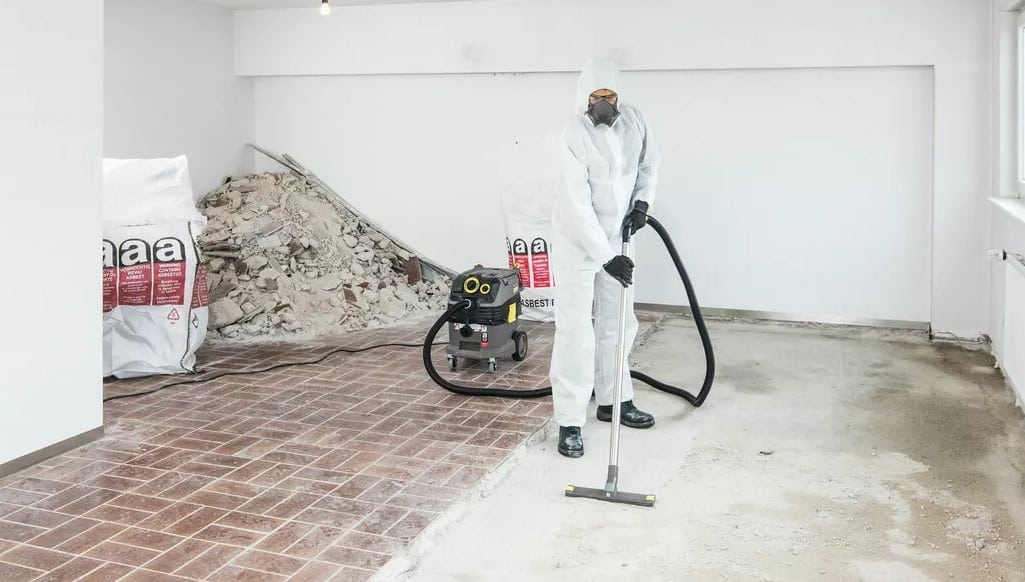
Section 3: Asbestos Testing Transition: Let’s dive into the process of asbestos testing and its significance.
What is Asbestos Testing?
Understanding the Procedure:
Asbestos testing is a detailed and precise process crucial for identifying the presence of asbestos fibers in materials. It begins with trained technicians carefully collecting samples from suspected materials, ensuring minimal disturbance to avoid fiber release. These samples undergo meticulous handling and packaging to prevent contamination during transport to accredited laboratories. Once at the laboratory, highly trained analysts utilize sophisticated microscopy and analytical techniques to examine the samples. They meticulously search for asbestos fibers, distinguishing them from other materials present in the samples. The results of the analysis provide crucial information about the extent of asbestos contamination, guiding decisions on risk management and remediation strategies. Ultimately, asbestos testing serves as a fundamental step in protecting public health and ensuring safety in various environments.
The Sampling Process:
During asbestos testing, the sampling process involves strategic selection of materials suspected to contain asbestos. Trained professionals carefully choose representative samples from different areas of the property, considering factors such as age, construction materials, and previous renovation history. These samples are collected using specialized tools and techniques to minimize the release of asbestos fibers into the air. Once collected, the samples are securely packaged and labeled to maintain their integrity during transportation to the laboratory. The sampling process is critical for obtaining accurate results that reflect the true presence and extent of asbestos contamination in the property.
Analyzing Results:
Following the sampling process, the collected samples undergo thorough analysis in accredited laboratories equipped to detect asbestos fibers. Trained technicians use various testing methods, including polarized light microscopy (PLM) and transmission electron microscopy (TEM), to identify and quantify asbestos fibers present in the samples. The results provide valuable information about the type, concentration, and distribution of asbestos-containing materials (ACMs) within the property. Based on the analysis, experts can assess the potential health risks associated with asbestos exposure and determine the appropriate course of action for management or remediation. Clear and comprehensive reporting of the results is essential for making informed decisions regarding asbestos management strategies.
Methods Used for Asbestos Testing
Sampling Techniques:
Asbestos testing involves the collection of samples from various materials suspected of containing asbestos. Common sampling techniques include bulk sampling, surface sampling, and air sampling. Bulk sampling entails removing a portion of the material suspected of containing asbestos for laboratory analysis. Surface sampling involves collecting dust or debris from surfaces where asbestos-containing materials may be present. Air sampling measures the concentration of airborne asbestos fibers in the environment, providing insight into the level of exposure risk. Each sampling method serves a specific purpose and may be used alone or in combination to assess asbestos presence comprehensively.
Laboratory Analysis:
Once samples are collected, they undergo rigorous laboratory analysis to detect the presence of asbestos fibers. Polarized light microscopy (PLM) and transmission electron microscopy (TEM) are the two primary methods used for asbestos fiber identification. PLM is commonly employed for bulk and surface samples, allowing technicians to visually examine fibers under a microscope and determine their asbestos content. TEM, a more advanced technique, provides higher resolution and is suitable for analyzing smaller airborne fibers captured through air sampling. By utilizing these methods, laboratories can accurately identify asbestos fibers and quantify their concentration in samples.
Regulatory Compliance:
Asbestos testing must adhere to stringent regulatory standards established by government agencies to ensure accuracy and reliability. Accredited laboratories follow prescribed protocols and quality control measures to maintain compliance with regulatory requirements. These standards govern sample collection, handling, analysis, and reporting procedures to uphold the integrity and validity of test results. Compliance with regulations not only ensures the safety of occupants and workers but also facilitates legal and regulatory compliance for property owners and stakeholders. By adhering to established guidelines, asbestos testing professionals uphold the highest standards of quality and reliability in their services.
Importance of Professional Asbestos Testing Services
Ensuring Accuracy and Reliability:
Professional asbestos testing services employ trained technicians and accredited laboratories equipped with advanced instrumentation to ensure accurate and reliable results. These professionals have the expertise to identify asbestos-containing materials (ACMs) and assess potential exposure risks effectively. By utilizing specialized techniques and following standardized procedures, they can provide precise measurements of asbestos concentrations in various samples. This level of accuracy is crucial for making informed decisions regarding asbestos management and mitigation strategies.
Comprehensive Assessment:
Professional asbestos testing services offer comprehensive assessments that cover a wide range of materials and environments. They conduct thorough inspections of buildings, structures, and air quality to identify potential sources of asbestos contamination. Through systematic sampling and analysis, they can determine the extent of asbestos presence and assess the associated health risks. This comprehensive approach allows property owners, employers, and regulatory authorities to develop targeted mitigation plans and ensure the safety of occupants and workers.
Legal and Regulatory Compliance:
Engaging professional asbestos testing services helps ensure compliance with legal and regulatory requirements governing asbestos management and control. Accredited testing laboratories adhere to established standards and protocols mandated by regulatory agencies, such as the Environmental Protection Agency (EPA) and Occupational Safety and Health Administration (OSHA). By obtaining certified test reports from reputable service providers, property owners and managers can demonstrate due diligence and meet their obligations under applicable laws and regulations. This proactive approach not only minimizes liability but also fosters a safe and healthy environment for all stakeholders.
Risk Mitigation and Management:
Professional asbestos testing services play a vital role in risk mitigation and management by identifying potential hazards and implementing appropriate control measures. By accurately assessing asbestos concentrations and exposure risks, they enable stakeholders to make informed decisions regarding asbestos removal, abatement, or encapsulation. Timely detection of asbestos contamination allows for prompt action to minimize exposure and prevent adverse health effects. Through ongoing monitoring and testing, professionals help ensure that control measures remain effective and that any new hazards are promptly addressed. This proactive approach mitigates risks and promotes the long-term safety and well-being of building occupants and workers.
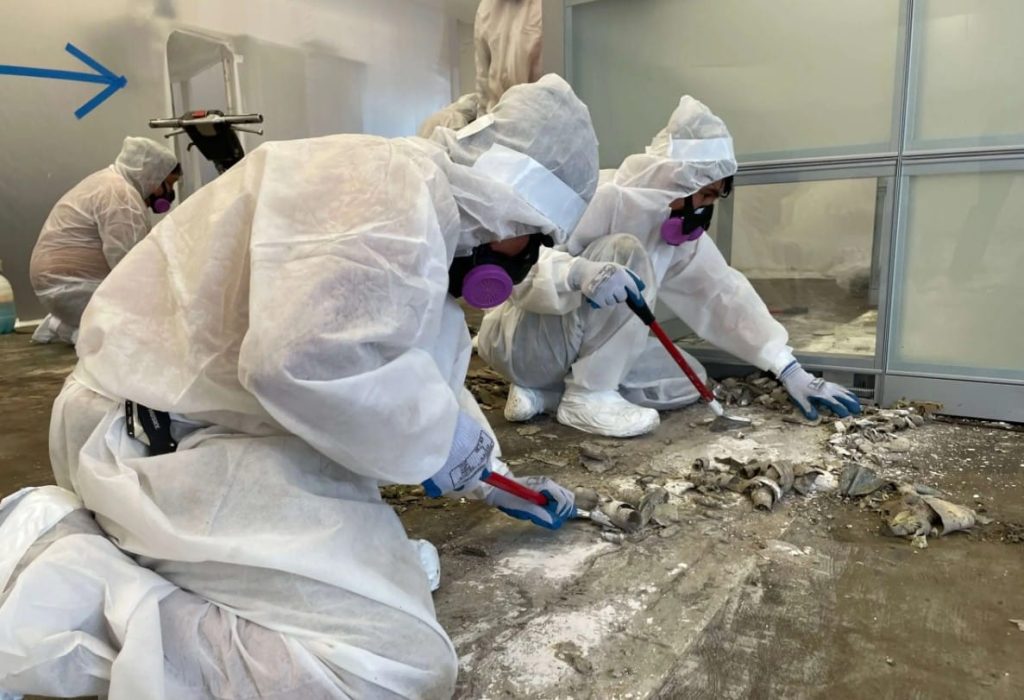
Section 4: Asbestos Removal Transition: Next, we’ll explore the process of asbestos removal and its complexities.
Overview of Asbestos Removal Procedures
Understanding the Process:
Asbestos removal procedures involve several crucial steps to ensure the safe and effective removal of asbestos-containing materials (ACMs). The process typically begins with a thorough inspection of the site to identify all ACMs present. Once identified, the removal team devises a comprehensive plan outlining the necessary steps to safely remove the asbestos while minimizing exposure risks.
Containment and Isolation:
One of the primary objectives of asbestos removal is to contain and isolate the hazardous materials to prevent their dispersion into the surrounding environment. This is achieved by setting up containment barriers and negative air pressure systems to ensure that any released asbestos fibers are contained within the removal area.
Safe Removal Techniques:
During the removal process, trained professionals utilize specialized equipment and techniques to safely and efficiently remove asbestos-containing materials. This may involve wetting the materials to minimize fiber release, carefully dismantling structures to access ACMs, and employing HEPA filtration systems to capture airborne asbestos particles.
Disposal and Decontamination:
Once the asbestos materials have been removed, they must be properly disposed of in accordance with regulatory guidelines. This often involves sealing the materials in leak-tight containers and transporting them to authorized disposal facilities. Additionally, thorough decontamination of the work area and equipment is essential to ensure that no asbestos fibers remain.
Overall, asbestos removal procedures require meticulous planning, strict adherence to safety protocols, and the expertise of trained professionals to effectively mitigate the risks associated with asbestos exposure.
Safety Measures During Asbestos Removal
Prioritizing Safety:
Ensuring the safety of workers and occupants is paramount during asbestos removal procedures. Rigorous safety measures are implemented to minimize exposure to asbestos fibers and mitigate potential health risks.
Personal Protective Equipment (PPE):
Workers involved in asbestos removal are equipped with specialized personal protective equipment (PPE) to shield them from exposure to asbestos fibers. This typically includes disposable coveralls, respirators with high-efficiency particulate air (HEPA) filters, gloves, and eye protection.
Containment and Encapsulation:
To prevent the spread of asbestos fibers, the removal area is meticulously sealed off and contained using plastic sheeting and negative air pressure systems. This containment prevents the escape of asbestos particles into surrounding areas and minimizes the risk of contamination.
Safe Handling and Disposal:
Trained professionals handle asbestos-containing materials (ACMs) with extreme caution, employing wetting techniques to suppress dust and minimize fiber release. Once removed, the ACMs are carefully packaged and labeled for safe transport to approved disposal facilities, where they are disposed of in accordance with regulatory requirements.
Air Monitoring and Clearance Testing:
Continuous air monitoring is conducted throughout the removal process to assess airborne asbestos levels and ensure that exposure limits are not exceeded. Additionally, clearance testing is performed post-removal to verify that the area is free of asbestos contamination and safe for reoccupation.
Training and Certification:
All personnel involved in asbestos removal undergo rigorous training and certification to ensure they are proficient in safe removal practices and regulatory compliance. This includes comprehensive training on asbestos hazards, proper handling techniques, and emergency procedures.
By implementing these safety measures, asbestos removal projects can be carried out effectively while safeguarding the health and well-being of workers and occupants.
Hiring Professional Asbestos Removal Services
Engaging Expertise:
When dealing with asbestos removal, it’s crucial to enlist the services of professional asbestos removal companies. Here’s why hiring professionals is essential:
Expertise and Experience:
Professional asbestos removal services have extensive experience and specialized expertise in handling asbestos-containing materials (ACMs). They are well-versed in industry best practices, regulations, and safety protocols, ensuring that removal is conducted efficiently and safely.
Compliance with Regulations:
Asbestos removal is subject to stringent regulations and guidelines to protect workers and the environment. Professional removal companies have a thorough understanding of these regulations and ensure full compliance throughout the removal process, minimizing the risk of legal liabilities and penalties.
Advanced Equipment and Techniques:
Professional removal companies utilize state-of-the-art equipment and advanced techniques to safely and effectively remove asbestos. They have access to specialized tools, containment systems, and HEPA filtration units, which are essential for minimizing fiber release and preventing contamination.
Comprehensive Services:
Professional asbestos removal companies offer comprehensive services that encompass all aspects of the removal process, from initial assessment and testing to proper disposal. They handle every stage of the removal process with precision and care, providing peace of mind to property owners.
Risk Mitigation:
Attempting to remove asbestos without proper training and equipment can pose significant health risks to individuals and may result in exposure to airborne asbestos fibers. Hiring professional removal services mitigates these risks by entrusting the task to trained professionals who prioritize safety and adhere to strict protocols.
Overall, hiring professional asbestos removal services is the safest and most effective approach to managing asbestos-containing materials. It ensures that asbestos removal is carried out correctly, minimizing risks to health and the environment while achieving regulatory compliance.
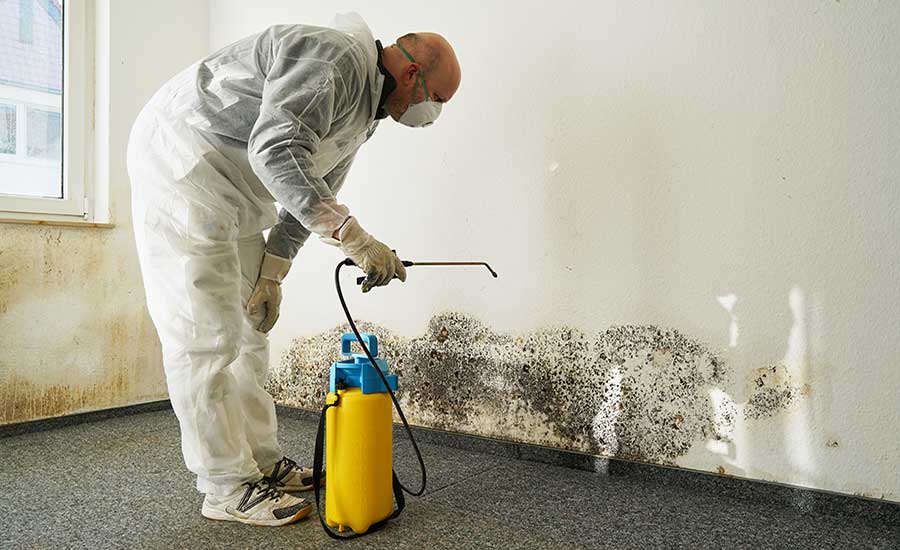
Section 5: Asbestos Abatement and Remediation Transition: Finally, we’ll discuss the methods for asbestos abatement and remediation.
Understanding Asbestos Abatement
Comprehensive Approach:
Asbestos abatement refers to the process of reducing or eliminating the health risks associated with asbestos-containing materials (ACMs) in buildings. Here’s an overview of what asbestos abatement entails:
Identification and Assessment:
The first step in asbestos abatement is identifying and assessing the presence of asbestos-containing materials in the building. This involves conducting thorough inspections and testing to determine the extent of asbestos contamination and the appropriate course of action.
Development of Abatement Plan:
Based on the assessment findings, a comprehensive abatement plan is developed. This plan outlines the methods and strategies for safely removing or encapsulating asbestos materials to minimize exposure risks. It also includes detailed protocols for worker safety, containment, and disposal.
Implementation of Abatement Measures:
Once the abatement plan is approved, trained professionals begin implementing the necessary abatement measures. This may involve containment of affected areas, removal of asbestos materials, or encapsulation to prevent fiber release. All activities are carried out in accordance with regulatory requirements and industry standards.
Air Monitoring and Clearance Testing:
During and after the abatement process, air monitoring and clearance testing are conducted to ensure that asbestos levels are within acceptable limits. This involves sampling air for asbestos fibers and verifying that contamination has been effectively mitigated before reoccupying the space.
Documentation and Compliance:
Throughout the asbestos abatement process, thorough documentation is maintained to demonstrate compliance with regulations and standards. This includes records of inspections, test results, work procedures, and waste disposal documentation.
Overall, asbestos abatement is a meticulous process that requires careful planning, execution, and monitoring to effectively reduce asbestos-related health risks. By understanding the steps involved in asbestos abatement, property owners can ensure the safe management of asbestos-containing materials in their buildings.
Strategies for Asbestos Remediation
Strategic Approach:
Asbestos remediation involves the application of various strategies to address asbestos contamination and minimize health risks. Here are some effective strategies for asbestos remediation:
Encapsulation:
One approach to asbestos remediation is encapsulation, which involves sealing asbestos-containing materials with a protective coating to prevent the release of fibers. This method is often used for materials that are in good condition and unlikely to be disturbed, such as asbestos-containing pipe insulation or floor tiles.
Enclosure:
Another strategy is enclosure, where asbestos-containing materials are enclosed within airtight barriers to prevent exposure. This method is commonly used for larger areas or structures where removal may be impractical or costly. Enclosure can involve constructing barriers around asbestos-containing materials or enclosing them within sealed enclosures.
Selective Demolition:
In cases where asbestos-containing materials cannot be encapsulated or enclosed, selective demolition may be necessary. This involves carefully removing and disposing of asbestos materials while minimizing disturbance and fiber release. Selective demolition techniques may include wetting materials to suppress dust, using HEPA filtration systems, and employing specialized equipment and procedures.
Replacement:
In some instances, the most effective remediation strategy is to completely remove and replace asbestos-containing materials with safer alternatives. This approach is often employed for materials that are extensively damaged or pose a significant risk of fiber release, such as asbestos insulation or roofing materials.
Integrated Management:
Effective asbestos remediation often involves an integrated approach that combines multiple strategies tailored to the specific circumstances of the site. This may include a combination of encapsulation, enclosure, selective demolition, and replacement, depending on factors such as the condition of the materials, the extent of contamination, and the intended use of the building.
Continuous Monitoring and Maintenance:
After remediation measures are implemented, ongoing monitoring and maintenance are essential to ensure the long-term effectiveness of the remediation efforts. This may involve regular inspections, air monitoring, and maintenance of encapsulated or enclosed materials to prevent deterioration or damage that could lead to fiber release.
By employing these strategic approaches to asbestos remediation, property owners and managers can effectively manage asbestos contamination and protect the health and safety of occupants and workers.
Compliance and Regulations in Asbestos Abatement
Ensuring Regulatory Compliance:
Compliance with regulations governing asbestos abatement is crucial to protect the health and safety of workers, occupants, and the environment. Here are key aspects of compliance and regulations in asbestos abatement:
Understanding Regulatory Frameworks:
Asbestos abatement is subject to a complex regulatory framework established by government agencies at the federal, state, and local levels. These regulations outline requirements for the handling, removal, transportation, and disposal of asbestos-containing materials (ACMs) to prevent exposure and minimize environmental contamination.
Federal Regulations:
In the United States, asbestos abatement is primarily regulated by the Environmental Protection Agency (EPA) and the Occupational Safety and Health Administration (OSHA). The EPA regulates asbestos under the Toxic Substances Control Act (TSCA), which establishes standards for asbestos management, notification, and worker protection. OSHA oversees asbestos abatement activities in the workplace through standards such as the Asbestos Construction Standard (29 CFR 1926.1101) and the Asbestos General Industry Standard (29 CFR 1910.1001).
State and Local Regulations:
In addition to federal regulations, many states have their own asbestos regulations that may impose stricter requirements or additional permitting and notification procedures. Local jurisdictions may also have ordinances or codes governing asbestos abatement activities within their boundaries. It is essential for abatement contractors and property owners to familiarize themselves with applicable regulations and obtain the necessary permits before commencing abatement work.
Licensing and Certification:
Asbestos abatement contractors and workers are typically required to obtain licenses or certifications demonstrating their competence and compliance with regulatory standards. These certifications may include training in asbestos safety, handling, removal techniques, and waste disposal procedures. Accredited training programs and certification exams are available to ensure that individuals performing abatement activities are adequately trained and qualified.
Notification and Record-Keeping:
Regulations often require abatement contractors to provide advance notification to regulatory agencies and building occupants before commencing asbestos removal activities. Detailed records must be maintained throughout the abatement process, documenting procedures, air monitoring results, waste disposal manifests, and other pertinent information. Proper documentation is essential to demonstrate compliance with regulatory requirements and to address any potential liability issues.
Enforcement and Penalties:
Failure to comply with asbestos abatement regulations can result in serious consequences, including fines, penalties, legal action, and suspension or revocation of licenses. Regulatory agencies conduct inspections and enforcement actions to ensure that abatement activities are conducted safely and in accordance with applicable regulations. Property owners and contractors must prioritize compliance to avoid costly violations and protect public health and safety.
By adhering to regulatory requirements and implementing best practices in asbestos abatement, stakeholders can effectively manage asbestos hazards and minimize risks to human health and the environment. Compliance with regulations is essential to ensure safe and responsible handling of asbestos-containing materials and to prevent exposure in both occupational and non-occupational settings.
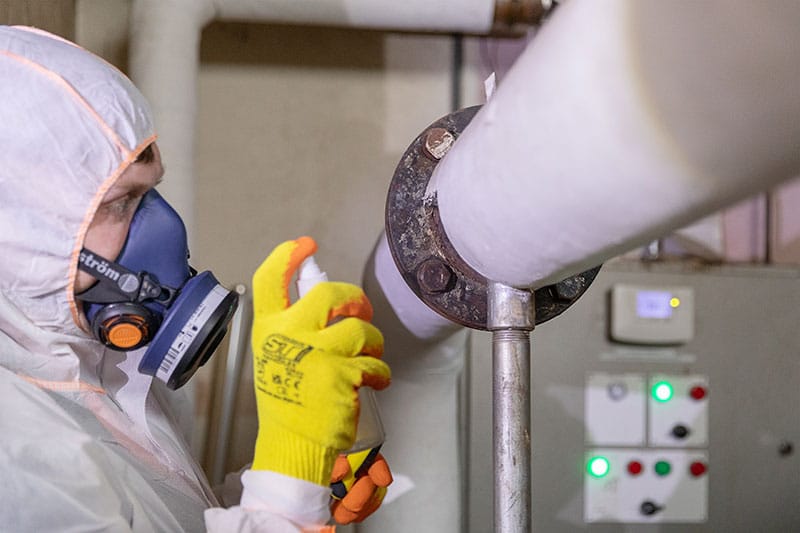
Conclusion:
Understanding the Risks of Asbestos Exposure:
At Rocky Demolition and Asbestos Removal, we recognize the gravity of asbestos-related health risks and the urgency of addressing them effectively. Our commitment to safety and environmental health drives us to continuously educate ourselves and our clients about the dangers of asbestos exposure and the importance of proactive management strategies.
Prioritizing Safety and Environmental Health:
Asbestos may present formidable challenges, but with proactive measures and informed decision-making, its risks can be effectively managed and minimized. Through thorough testing, accurate assessment of risks, and strategic planning, Rocky Demolition and Asbestos Removal empowers clients to make informed choices and take decisive action to protect their properties and occupants from asbestos-related harm.
Compliance with Regulatory Standards:
Furthermore, our commitment to compliance with regulatory requirements underscores our dedication to transparency, integrity, and accountability in all our endeavors. By adhering to strict standards and best practices, we uphold the highest levels of safety and quality in every aspect of our work, from initial assessment to final clearance.
Rocky Demolition and Asbestos Removal
At Rocky Demolition and Asbestos Removal, we prioritize safety and compliance with industry standards in all our services. As part of our commitment to transparency and providing valuable resources to our clients, we recommend referring to the guidelines set by the City of Vancouver’s Building and Development Services department for information on demolition permits and regulations.City of Vancouver’s

